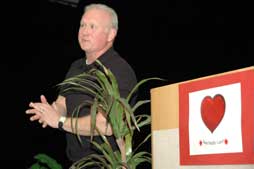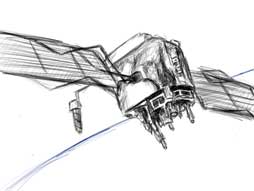By Alex Muhindura/reporter

“Every 15 minutes, heart disease claims a Texan’s life,” a physiologist said in a seminar on cardiovascular health and the importance of exercise Feb. 13.
In his seminar The Heart of the Matter, Mike Lofland said heart disease is the No. 1 cause of death in the United States, but is also avoidable with lifestyle changes. Certain risk factors, such as a sedentary lifestyle, increase the chance of disease.
“I’ve seen people circle a parking lot for 20 minutes in order to avoid a long walk into the mall,” he said.
Lofland also said other risk factors include increased body fat and blood pressure, which can be reduced with regular exercise.
The seminar, on NE Campus, was attended by an array of people including campus President Larry Darlage, students, senior citizens and a physical therapy class.
Lofland also gave tips on how to exercise properly and efficiently. Before any exercise, one should warm up with low intensity work because it increases blood flow and makes the workout 20 percent more efficient. Furthermore, he said, it reduces the risk of any muscle tears.
Aerobic exercise is the most beneficial for the heart, Lofland said. In order to be aerobic, an exercise must be rhythmic, use large muscle mass and be of moderate intensity.
“A good test for the intensity is to try and carry on a conversation during your exercise,” he said.
Aerobic exercise should be done for a minimum of 20 minutes at least three times a week.
Lofland also talked about strength training but warned that it is not beneficial if aerobic training is not done first.
The physiologist recommended 40 minutes of aerobic exercise for every 10 minutes of strength training.
“Aerobic exercise works on the motor (heart) while strength training works on the chassis (muscle tone),” he said. “You can have a beautiful chassis, but it ain’t going anywhere without a motor.”
Pat Marling, coordinator of health services on NE Campus, was pleased with the event.
“Overall, the seminar was a success, and the turnout of 80 people was much more than expected,” she said.





























